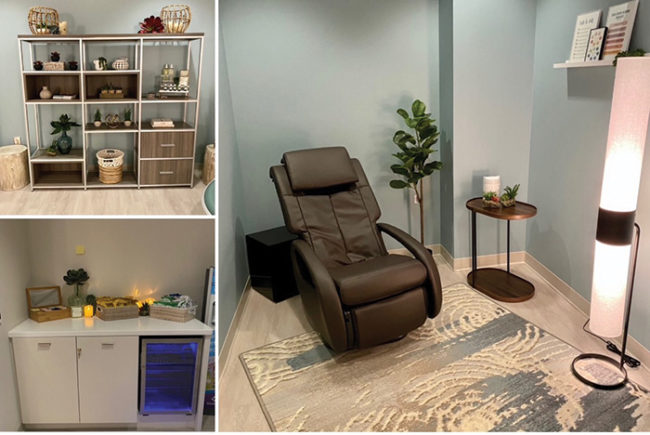
Image from Getty Images
Burnout among health care staff members is a pervasive problem in the United States, leading to health and safety consequences for both patients and staff, sometimes driving these essential personnel to leave the workforce.
It has been deemed a public health crisis. Nurse fatigue has also been identified as a high priority. The Center for Health Design’s Knowledge Repository includes several citations on this topic. Publications that explore the issue are highlighted here.
A case study by Pomare and colleagues examines staff experience during redevelopment. Staff shared both positive and negative perceptions around the upcoming facility changes, with feelings of fatigue resulting from constant physical and organizational change in health care. This was partially due to the lack of departmental champions and engagement in the facility design process.
A study by de Matos and colleagues looks at the relationship between intensive care unit room occupancy and staff burnout in a Brazilian cancer hospital. The researchers compared burnout between clinicians working in single-patient rooms to those working in multi-bed areas, and the results suggested burnout could not be attributed to room type. However, the researchers found some differences in stress.
For example, there was no difference in stress reported within the previous seven days, but stress in the previous 24 hours was higher for staff working in single-patient rooms. Family stress was not influenced by room type, but family member satisfaction was higher in single-bed rooms as compared to multi-bed areas. While room occupancy was not found to influence burnout, we need to consider the trade-offs (such as short-term stress and satisfaction) for different users.
A study by Wingler and Keys focused on the link between factors in the health care environment and nurse fatigue. The researchers reviewed focus group data from a previous study (11 nurses) and used a qualitative content analysis to examine the cumulative fatigue effects related to design.
They found four categories of fatigue (physical, cognitive, emotional and psychosocial fatigue) and highlight how the different types of fatigue were increased or decreased by four physical environment factors (ergonomic, sensory, layout and restorative).
As a simple example, locating supplies at the point of care can cut down on walking distance (an ergonomic factor), decreasing physical fatigue. They illustrate that the factors of the physical environment contribute to the effects of fatigue and, ultimately, the potential decision to remain in — or leave — the field.
There are myriad reasons why health care workers begin to experience “a combination of exhaustion, cynicism and perceived inefficacy,” and the health care physical environment can either contribute to — or mitigate — this important problem.
The following citations from The Center for Health Design’s Knowledge Repository of health care design resources were used by the author when writing this column:
- L. B. N. de Matos et al., “Single-Bed or Multibed Room Designs Influence ICU Staff Stress and Family Satisfaction, but Do Not Influence ICU Staff Burnout,” HERD: Health Environments Research & Design Journal, 2019, in press.
- D. Wingler and Y. Keys, “Understanding the Impact of the Physical Healthcare Environment on Nurse Fatigue,” Journal of Nursing Management, 2019, in press.
- T. P. Reith, “Burnout in United States Healthcare Professionals: A Narrative Review,” Cureus 10, no. 12 (Dec. 4, 2018): e3681–e3681.
- C. Pomare et al., “Organisational Change in Hospitals: A Qualitative Case-Study of Staff Perspectives,” BMC Health Services Research 19, no. 1 (2019): 840
Melissa Piatkowski, Research Associate, The Center for Health Design





